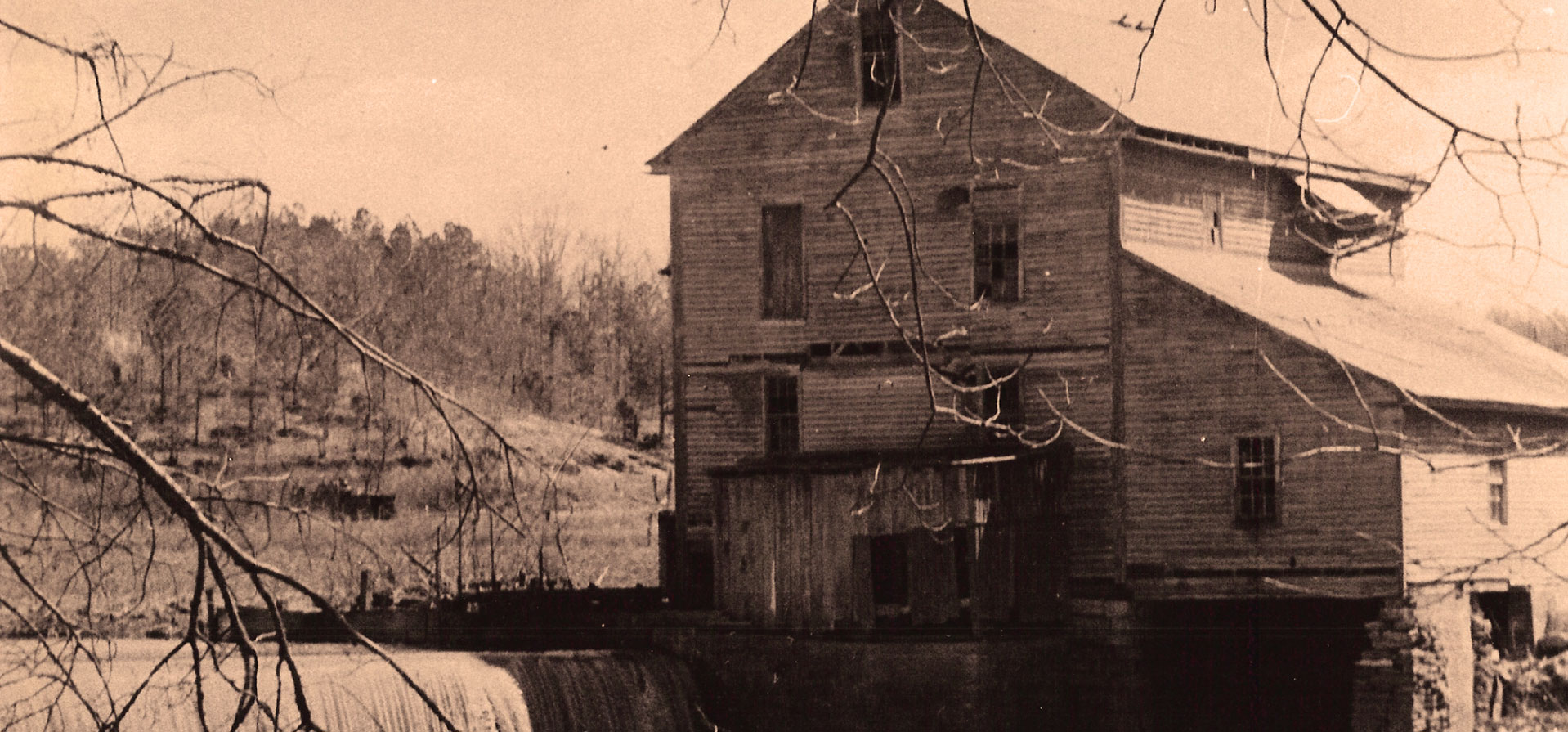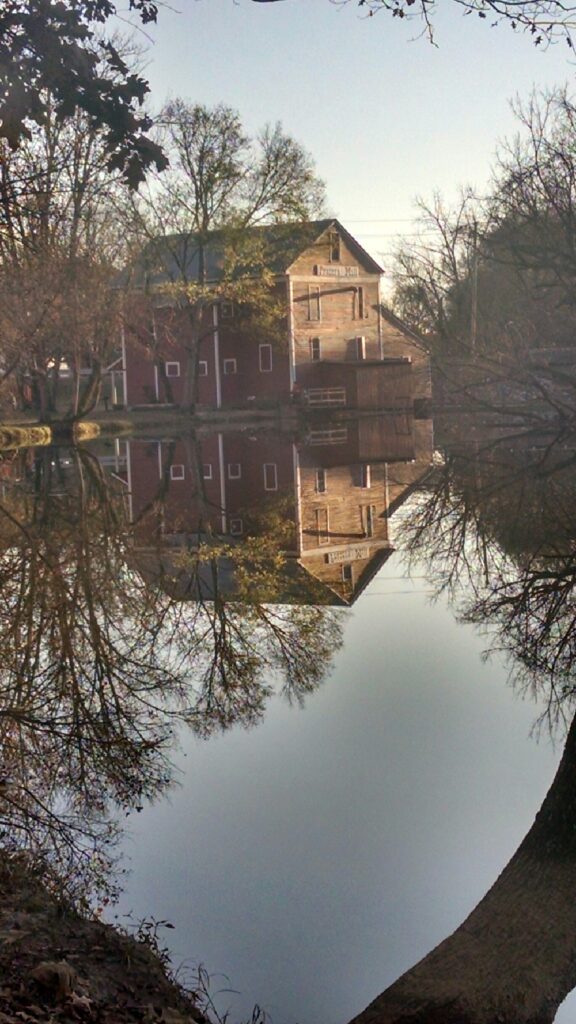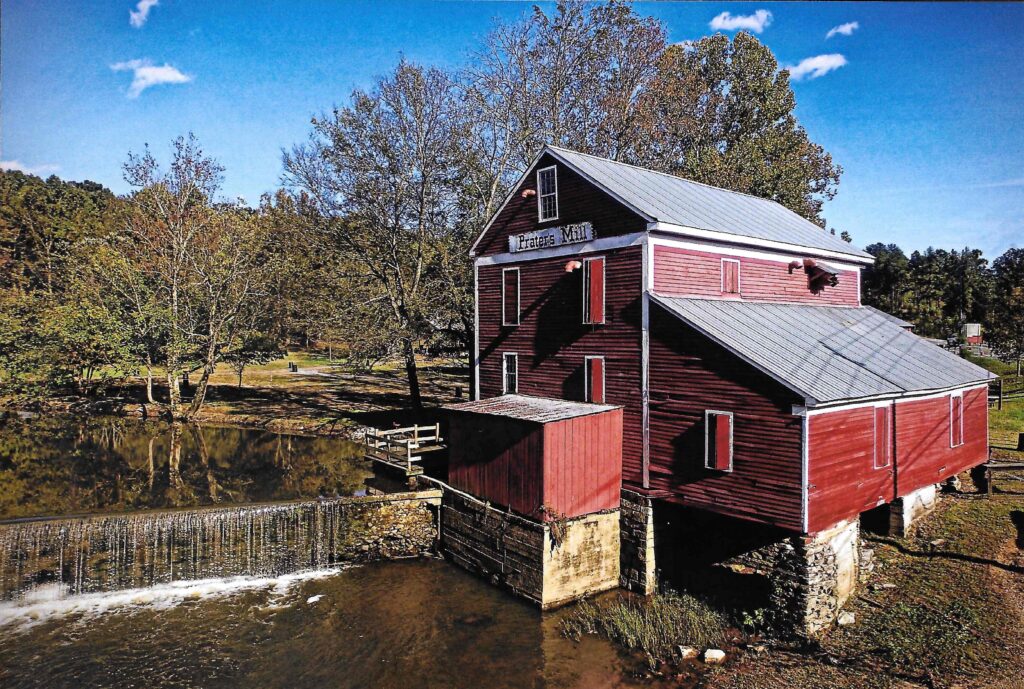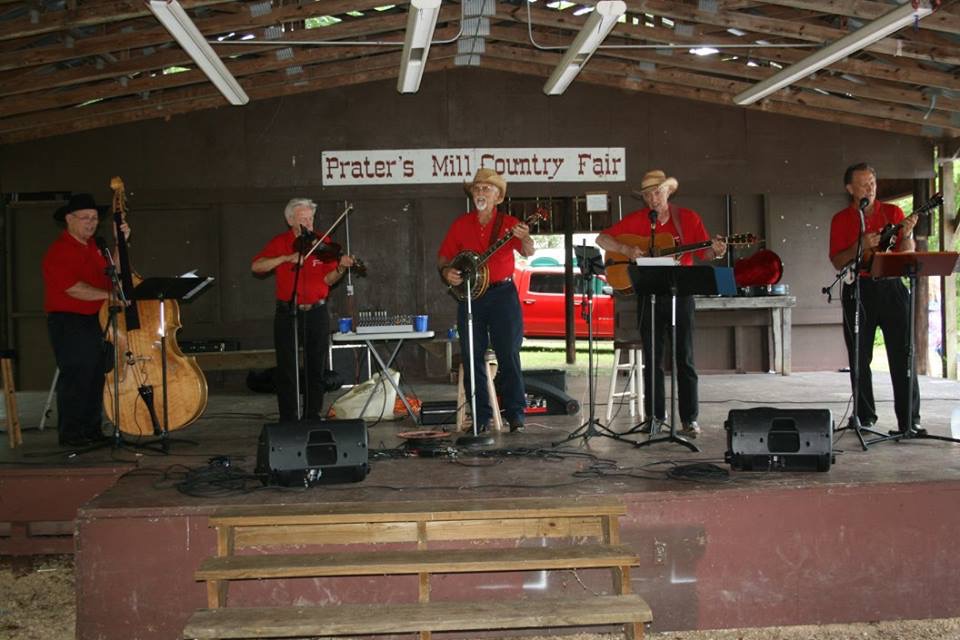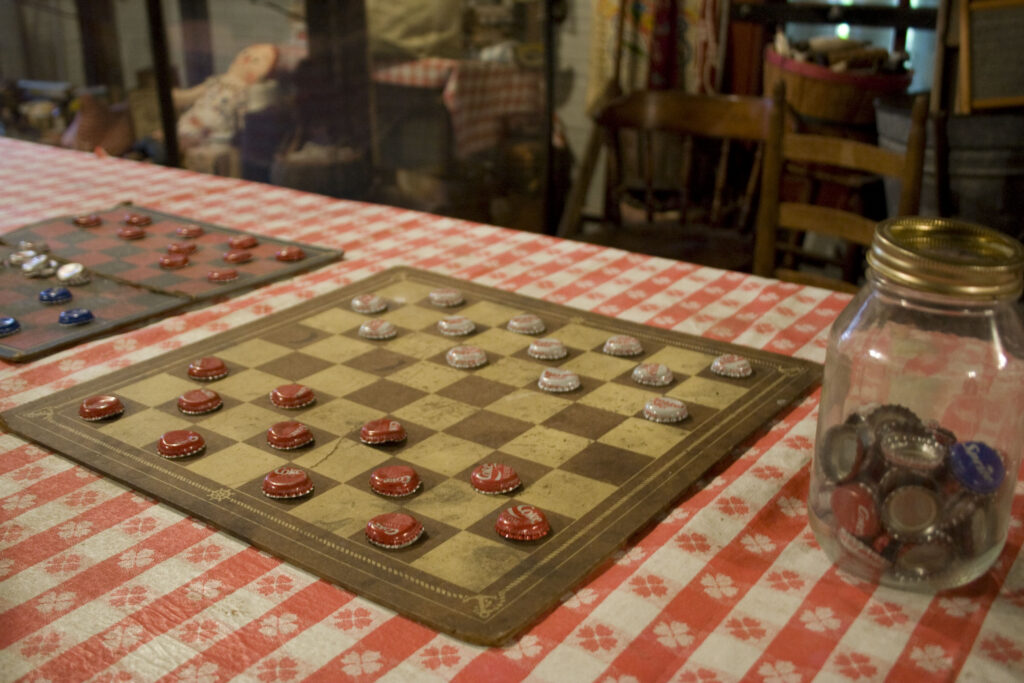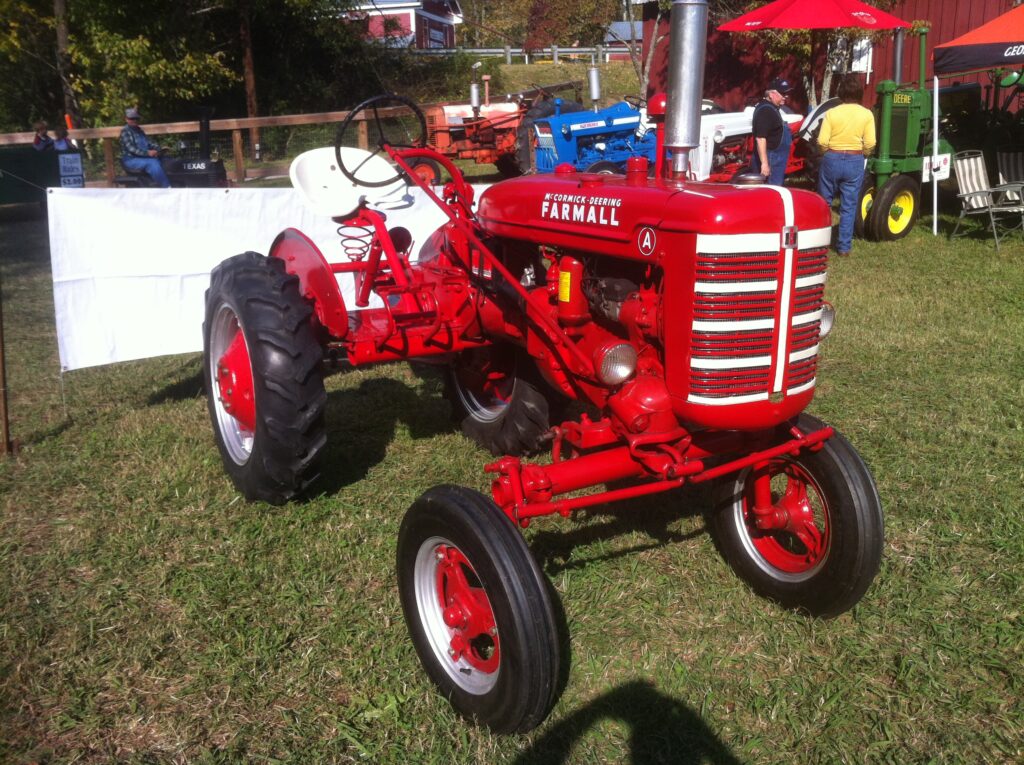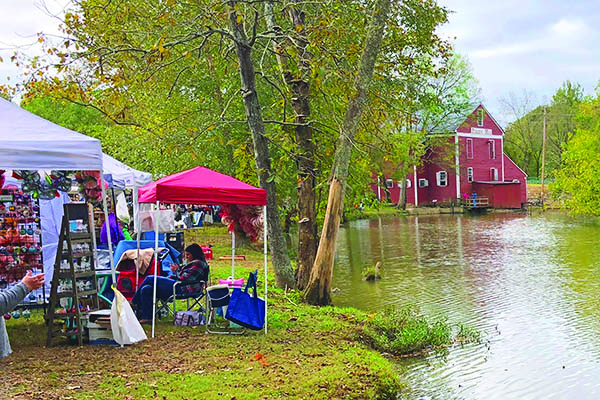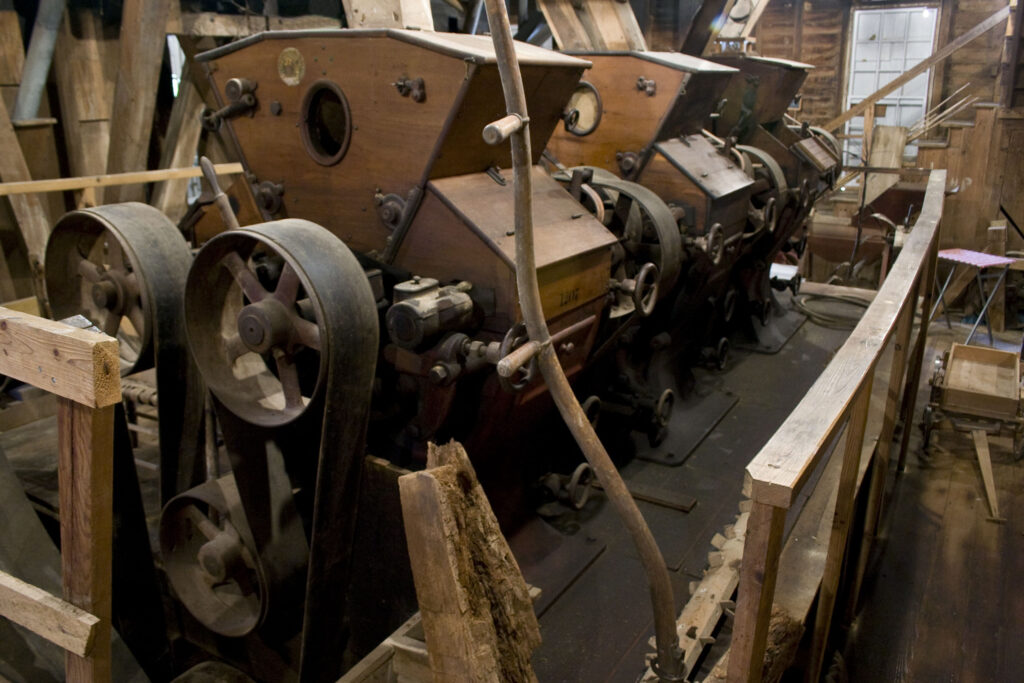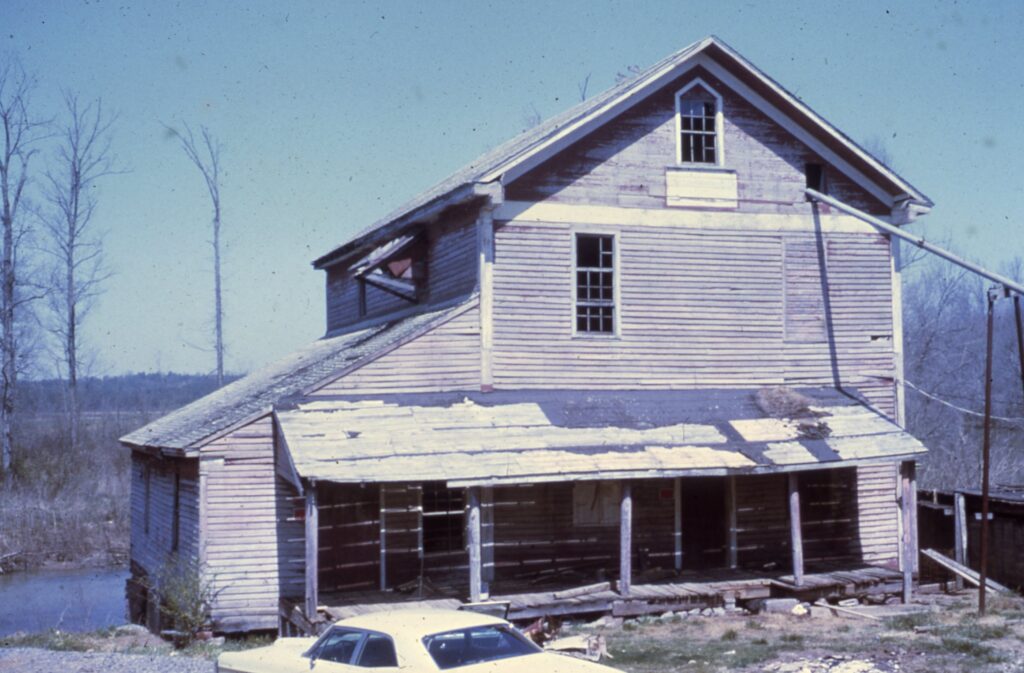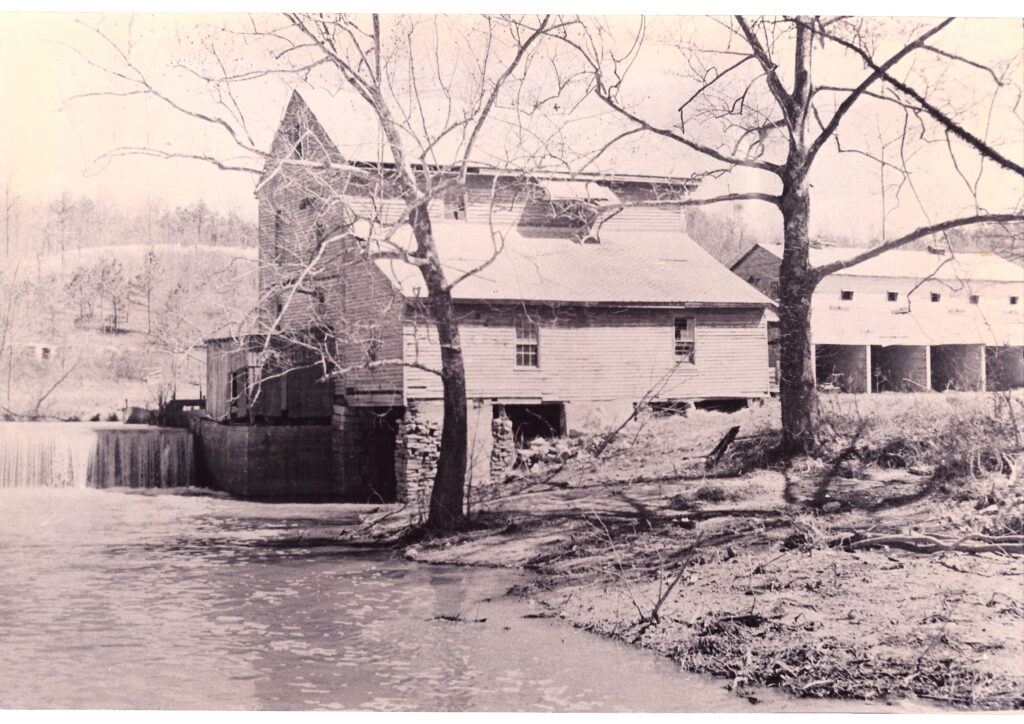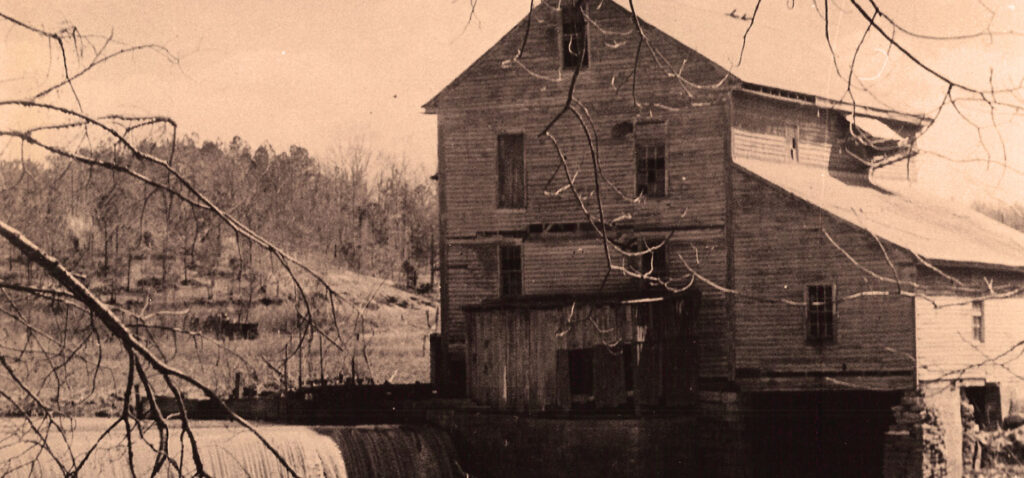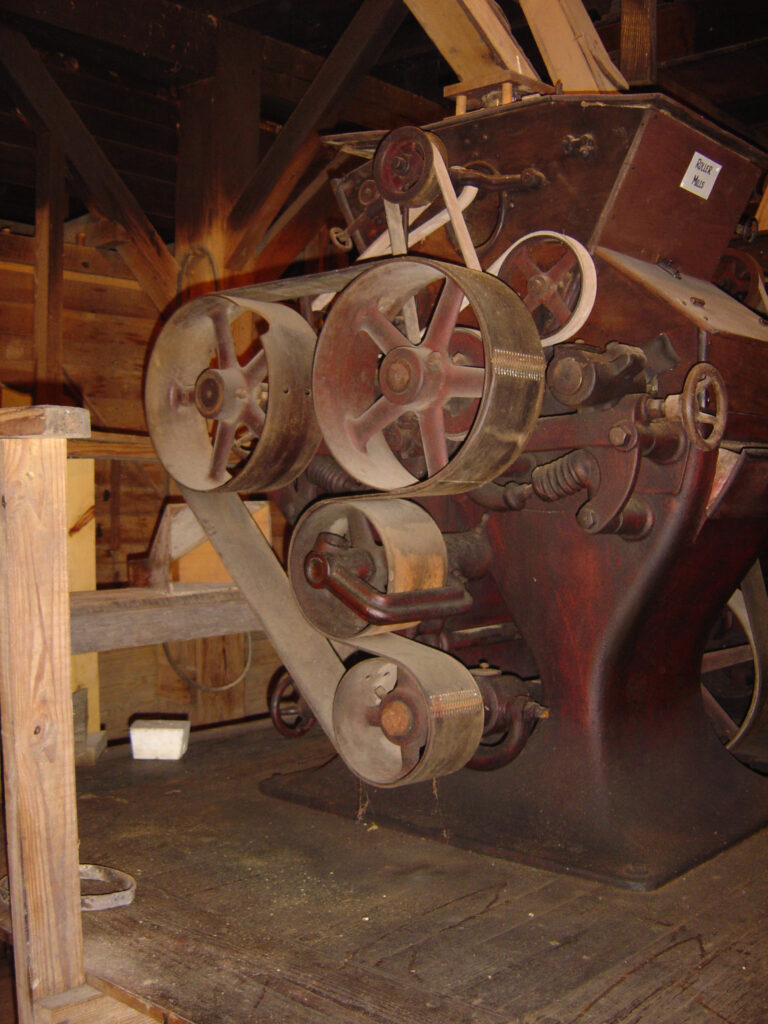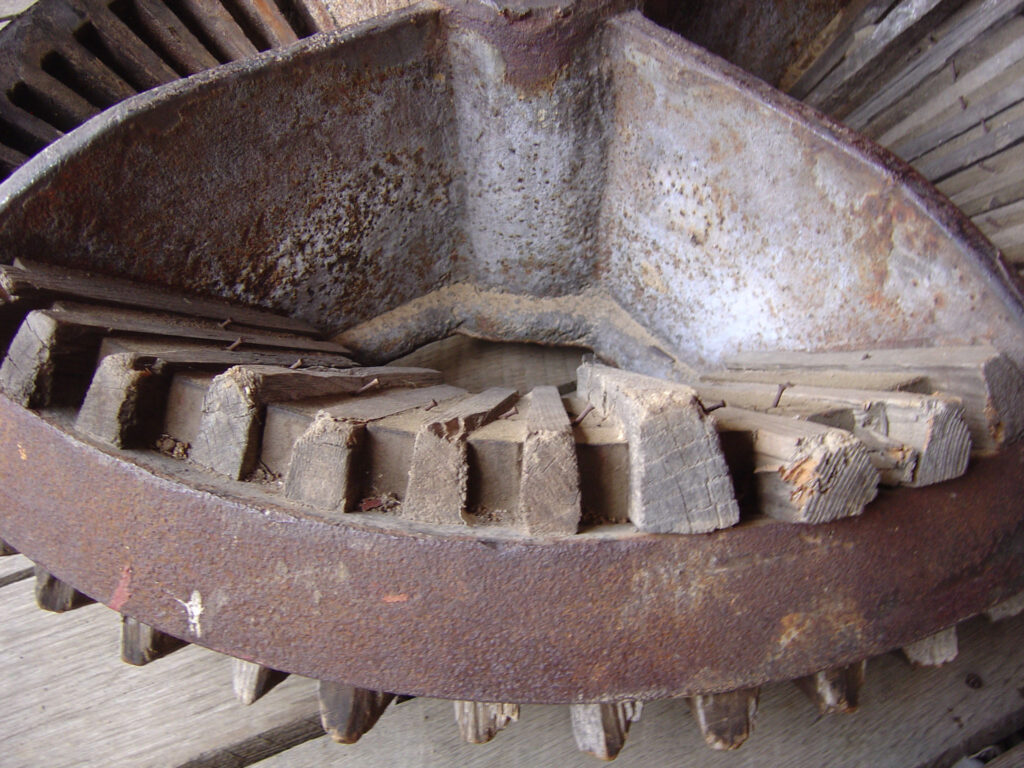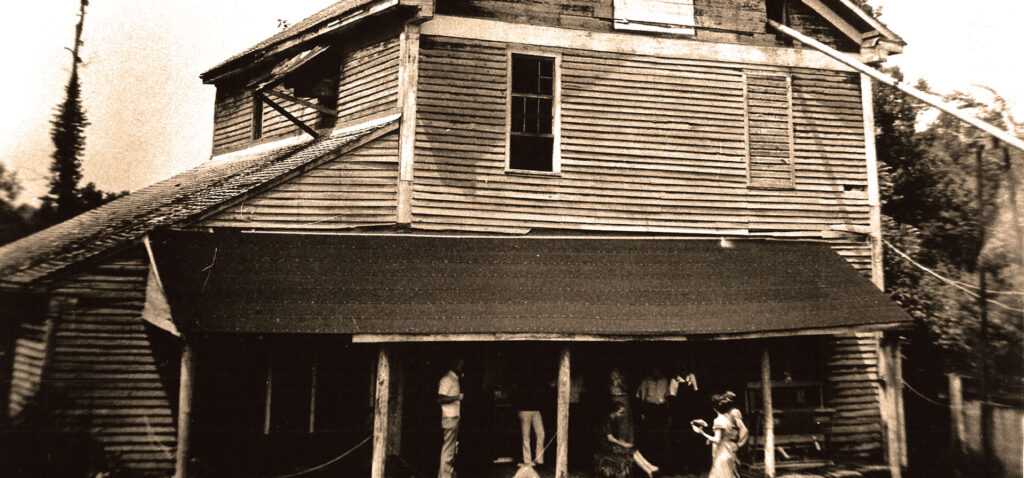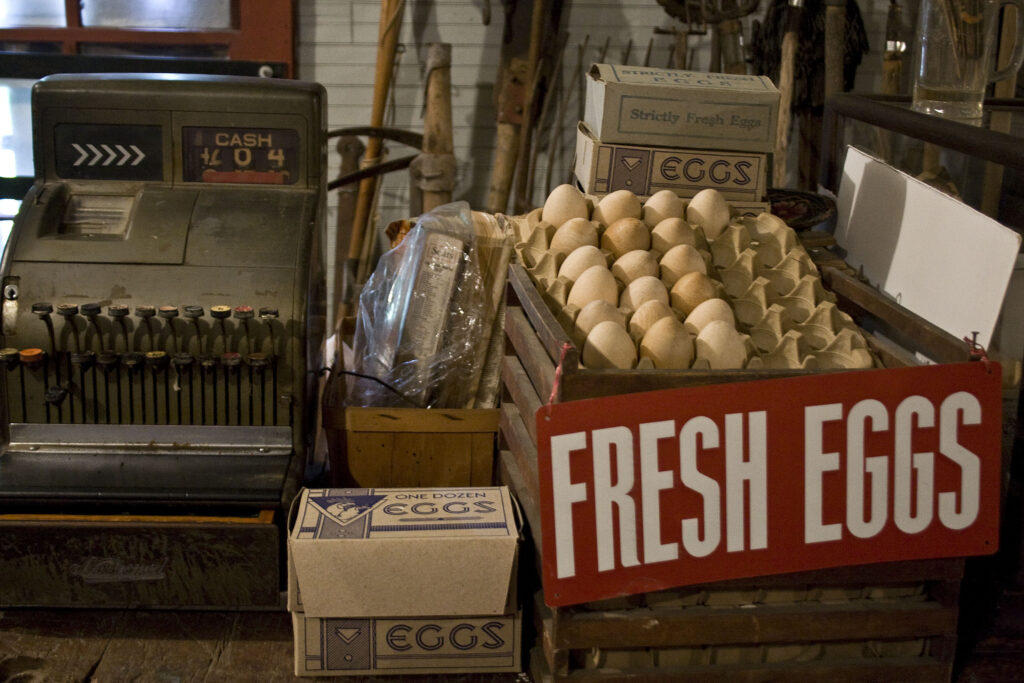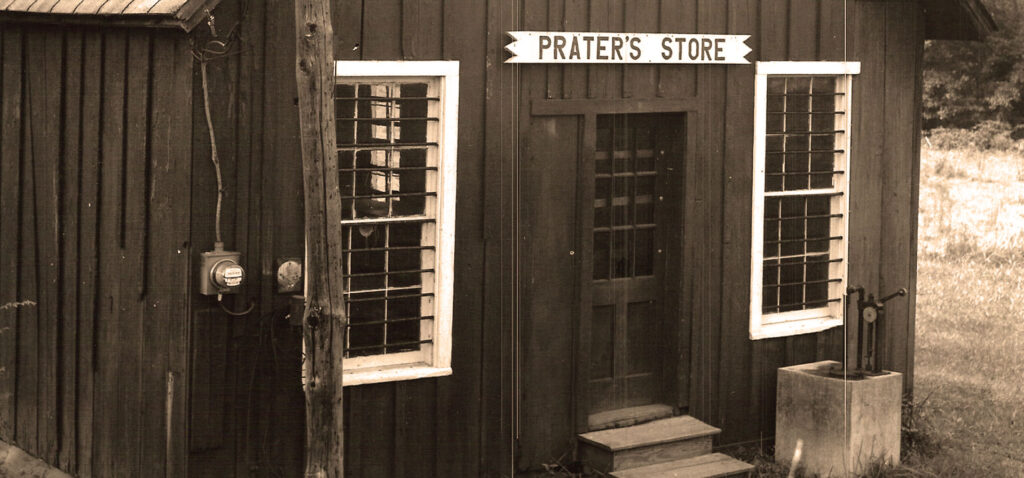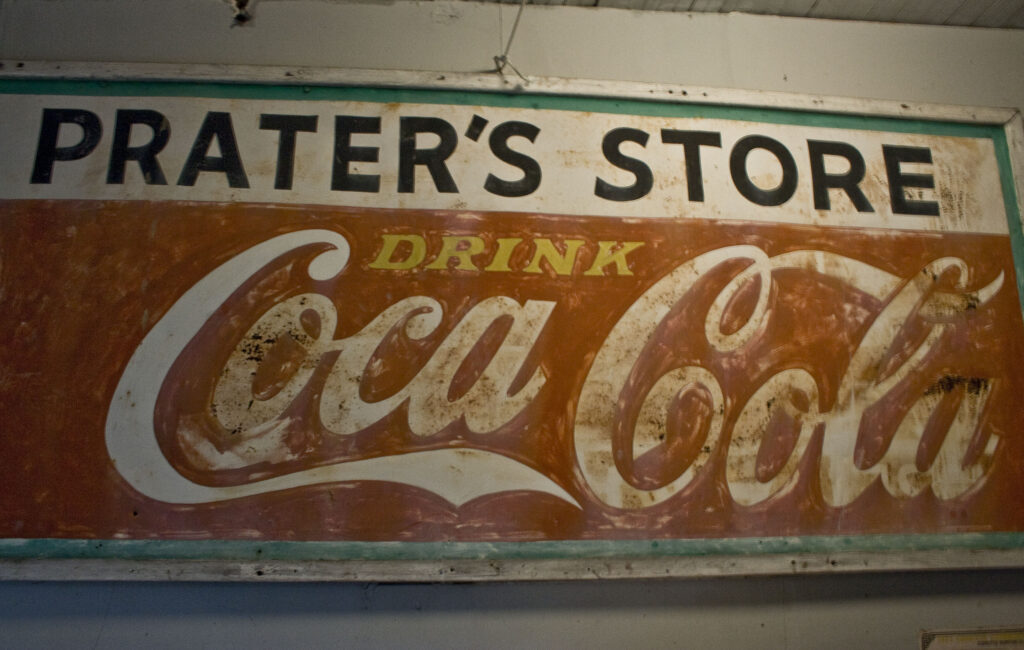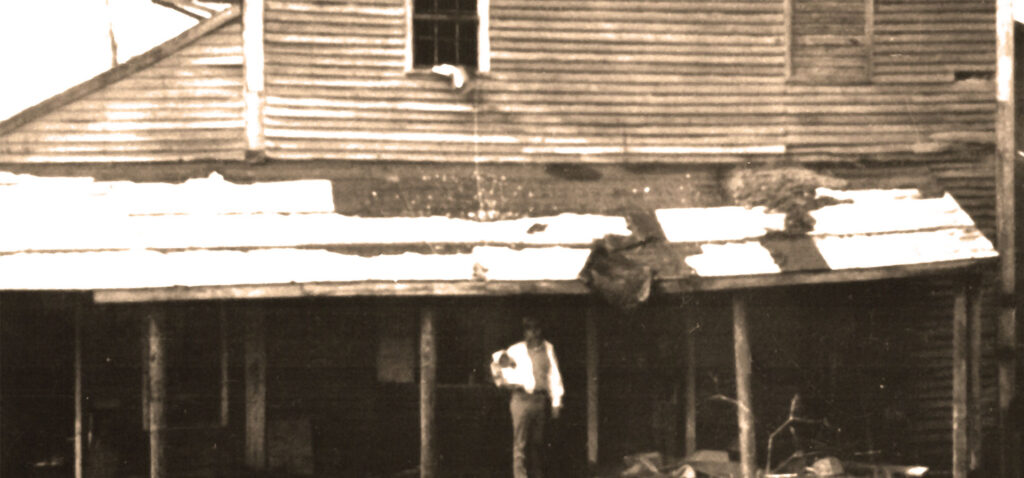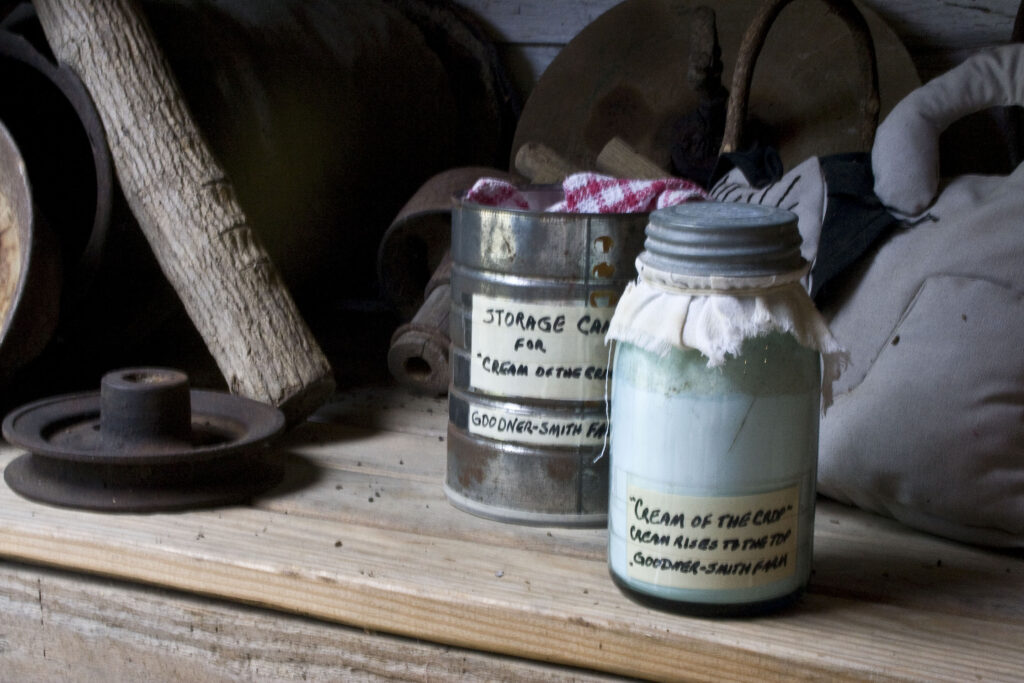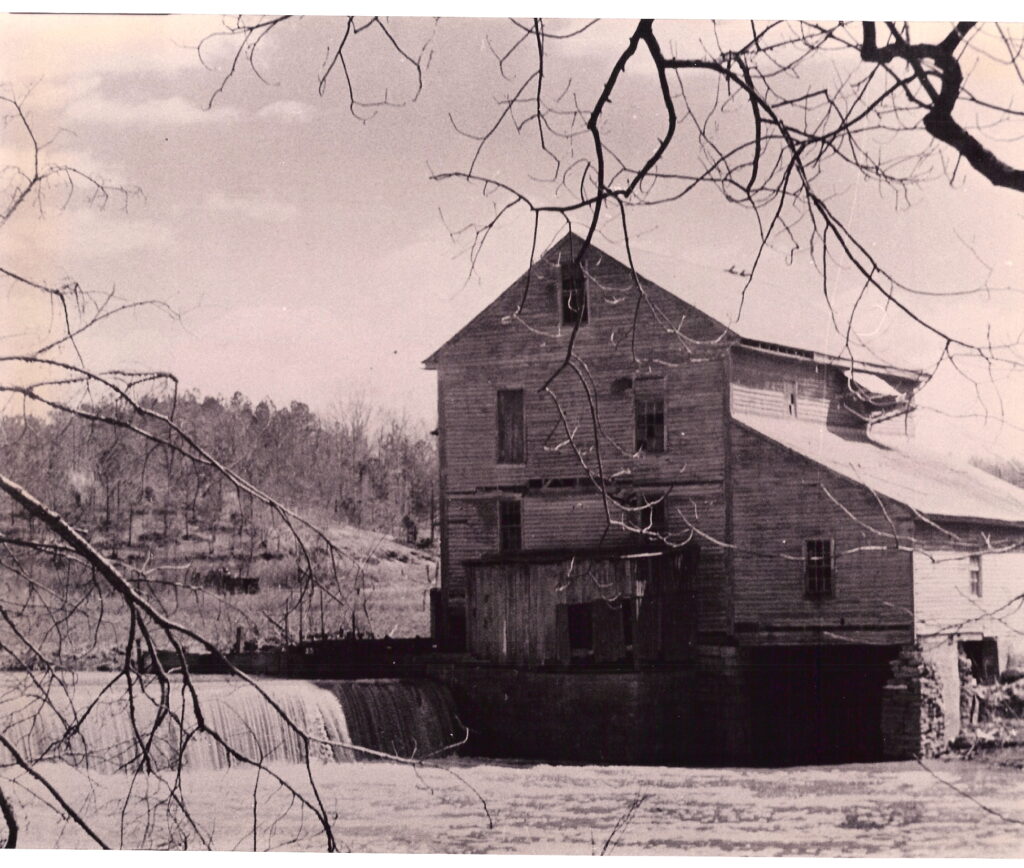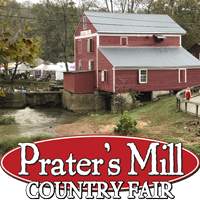
October 11th & 12th, 2025
Saturday 9-6 • Sunday 9-5
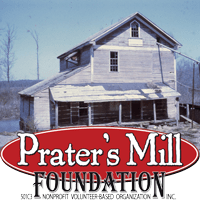
Volunteer Based
Nonprofit Organization
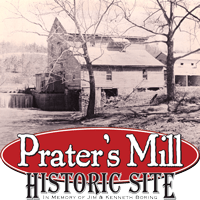
Trails and grounds open
Daily Dawn to Dusk
In 1855, pioneer businessman John Pitner built the grist mill, a sawmill and the miller’s house. After his death in 1855, his son-in-law Benjamin Franklin Prater inherited the site and led the development of a family-owned integrated mill complex including a blacksmith shop, country store, cotton gin and housing for workers. In the 1890s, Ben’s son William “Bill” Howard Prater installed a flour milling system in the grist mill and expanded the family businesses to Dalton with two cotton gins and a feed store.
The grist mill was built with an efficient Leffel turbine. The mill operates by an ingenious set of mechanisms. The turbine is situated at the bottom of a 9-ft. deep pool called a forebay. A floodgate in the dam is raised to allow the water behind the dam to fill the forebay. A throttle wheel inside the mill is activated which turns gears to operate 8 spider arms on the turbine. The spider arms gradually open 8 gates around the outer rim of the turbine. As the gates open, water from the forebay rushes into the turbine, spinning its vanes and turning the turbine shaft.
As Prater prospered, he added more sophisticated machinery and processes to the mill bringing many people to the site from miles around. Although there were numerous mills in the county, people came from great distances to Prater’s Mill where they could have their cotton ginned and horses shod while waiting for their grain to be processed. In addition, Prater provided a hostelry (inn) for those who had traveled more than half a day’s journey. Prater’s Mill was also a commercial flour mill. As Albert Duncan, a Prater’s Mill miller, said, “Corn mills were a few miles apart. Flour mills were many miles (apart).”
